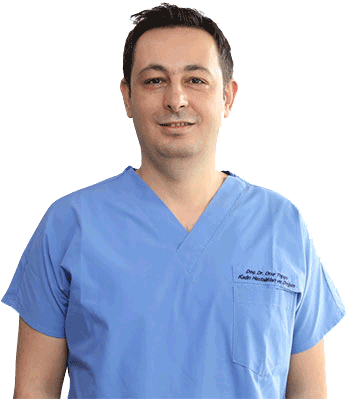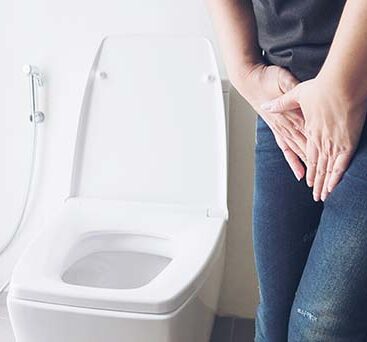
Prof. Dr. Onur Topçu
Gynecology and Obstetrics Specialist
The information provided below about medical diseases is not for advertising purposes. These are articles intended to inform and promote patients. If you think you have one of the diseases listed below, we recommend that you be examined by healthcare professionals who specialize in this field for medical advice and treatment.
What is Prolapus (Herniation – Prolapse)?
With my 20 years of gynecological surgery experience, I perform uterine prolapse, bladder prolapse or bowel prolapse surgeries vaginally and laparoscopically (closed), which are the most valuable and gold standard surgical techniques in this field. With these surgical techniques, I can be more helpful to my patients.
You can contact us by clicking here to make your appointment via WhatsApp.
Below you can read my informative article about uterine prolapse (uterine prolapse), cystocele (urinary bladder prolapse), (rectocele) and intestinal herniation.
1- Cystocele; inferior displacement of the bladder (bladder base)
2- Urethrocele; prolapse of the lower wall of the urethra
3- Cystourethrocele; cystocele involving the urethra
4- Rectocele; swelling of the upper wall of the intestine (rectum) into the posterior vaginal part
5- Enterocele (douglasocele); Herniation of the small intestine in the Douglas space into the vaginal lumen
6- Uterine prolapse is the descent of the cervix along with the uterus down from the vagina.
A herniation, which we call prolapse, may occur following a defect in the muscle tissues located in the shape of a hammock within the female pelvis and the ligaments that hold these muscle tissues in place. These herniations may involve the uterus (womb), bladder (urinary bladder), and rectum (intestine). In general, prolapse (herniation, prolapse); It is a term used for the displacement of the bladder, uterus or rectum.
400,000 operations are performed annually in the USA alone for prolapse (herniation, prolapse), which is responsible for thousands of gynecological surgical interventions performed all over the world every year.
So why does this prolapse (herniation, prolapse) occur?
Prolapse (herniation, prolapse) is a multifactorial problem caused by genetic and environmental factors.
Age, menopausal status, pregnancy, vaginal birth, obesity, chronic cough, chronic constipation, work stress and congenital factors play a role in prolapse (herniation, prolapse).
Birth Type
Vaginal birth is the most effective factor, 90% of women with prolapse are women who have given birth. Most cases are thought to be difficult and traumatic vaginal births. It has been shown that in patients who develop prolapse (herniation, prolapse), the risk of vaginal birth is higher than not giving birth at all or giving birth by cesarean section.
In the majority of women who develop prolapse (herniation, prolapse), the process begins with the first birth. The first birth causes the most or all damage to the pelvic floor, with subsequent births adding little to this damage.
Mechanical or hormonal effects that occur during pregnancy can negatively affect pelvic support. With the effect of increasing intra-abdominal pressure due to the growing uterus during pregnancy, the pelvic organs are pushed downwards and the pelvic floor muscles are constantly exposed to stress and strain.
One of the most important factors in terms of the development of prolapse (herniation, prolapse) is the type of birth. Damage to pelvic support tissues and their related neural structures, especially due to vaginal birth, is held responsible for this. During vaginal births, the pudendal nerve branches are affected, a partial denervation occurs in the pelvic floor, and the resulting dysfunction increases over time and may worsen with each birth.
During labor, the leading part of the fetus must pass the soft tissue resistance created by the lower uterine segment, cervix, endopelvic fascia, and muscular pelvic floor.
The baby in the womb travels through the pelvis through a high-pressure, low-flow channel with strong uterine contractions. Straining during birth also increases the damage to the support tissues around the pelvis in this structure.
Age
Prolapse (herniation, prolapse) becomes more evident with age. This is caused by weakness in all body muscles and tissues, including the pelvic floor muscles.
- MenopauseMost cases become evident after menopause due to the accumulation of factors that affect the pelvic floor over time. Atrophy due to estrogen deficiency affects all pelvic structures, resulting in prolapse (herniation, prolapse). Kyphotic changes in the spine due to osteoporosis due to age and prolonged estrogen deficiency cause horizontal shift in the pelvic inlet. With this change, the weight of the abdominal contents is reflected not on the pelvic inlet but on the pelvic floor and urogenital hiatus.Life styleAnother reason for the development of prolapse (herniation, prolapse) is lifestyle. The pressure created by the Valsalva maneuver or fixation of the respiratory diaphragm during heavy load carrying is applied directly to the pelvic floor. The complaint increases with back, shoulder and extremity weakness.Obesity
Obesity causes prolapse (herniation, prolapse) by directly increasing the load on the pelvic floor and causing movement limitation.
Connective Tissue Weakness
Joint hypermobility is more common in women with prolapse (herniation, prolapse). Collagen deficiency may also be observed in these patients.
Systemic Diseases
Diabetes mellitus, chronic obstructive pulmonary disease, constipation may contribute to prolapse (herniation, prolapse).
Prolapse (herniation, prolapse) Treatment
Lifestyle change and Kegel exercises
SurgicalIn surgery, correction of the defect vaginally or correction of the defect by laparoscopic, that is, closed surgery, are the most commonly used treatments today and are considered the gold standard.
In the video below, you can watch a pectopexy surgery I performed using the closed method for uterine prolapse.
For more detailed information, you can call 0 533 049 66 87.
Stay healthy..
Prof. Dr. H. Onur Topçu
Gynecology & Obstetrics-In Vitro Fertilization and Advanced Gynecological Endoscopy Specialist
PATIENT COMMENTS
Although I am young and not pregnant, I had a problem with uterine prolapse and I visited many doctors, but none of them gave a guarantee that it would not happen again. On one occasion, I crossed paths with my teacher Onur, and I had my surgery through closed surgery. The doctor’s brain enlightened me before and after the surgery…
Yeş** G**
Onur teacher was very supportive and encouraging at every stage of the process, from the very beginning to after the surgery. He informed us in the best and most accurate way by explaining all the details of the process completely and clearly. I would like to thank my teacher Onur very much and definitely recommend him to those who are looking for a doctor in this field.
Arz*** A***
Mr. Onur is a very professional and corporate doctor. I was pleased with his interest and knowledge. I would like to thank him from here too. It was important for me to talk about everything before the examination and surgery, to be informed and to be able to communicate if necessary. His teammates were also caring and friendly.
Sib*** B***
Dr. Because Mr. Onur performed my surgery very well, I did not have any problems after it. Moreover, I was afraid of the surgery. My close friend’s daughter also had the surgery, so I decided to do it after he suggested it.
Lat.. K….



